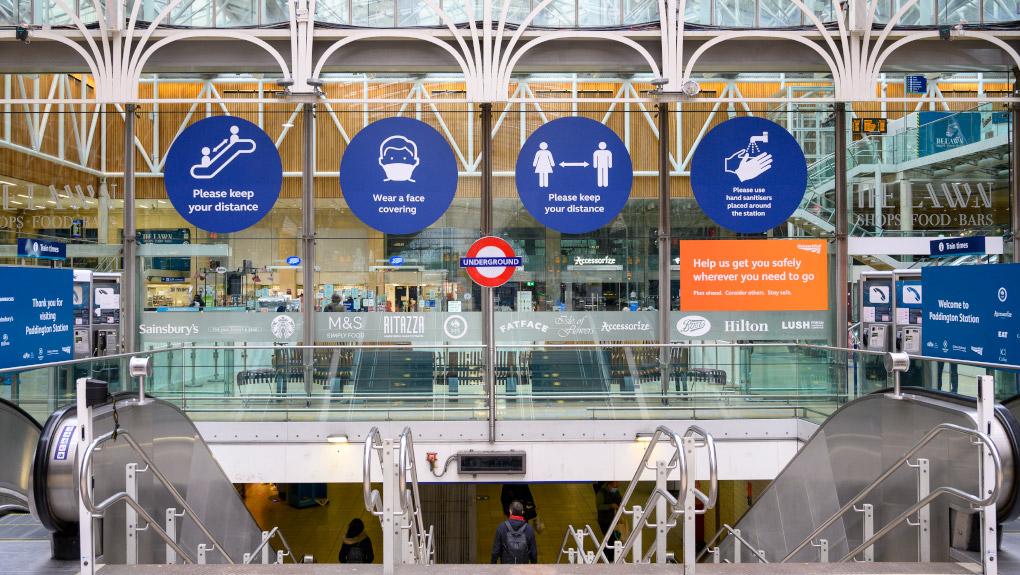
Nationally, 388 million journeys were made in 2020-21 (April to March), which equates to only 22% of the 1,739 million made in 2019-20.
Total passenger revenue in Great Britain was £1.9 billion in 2020-21, compared to £10.4 billion in 2019-20.
There were 80 million journeys made during the final quarter (Q4 January to March) of 2020-21, down from the 139 million made in the previous quarter (Q3 October to December) and the 133 million in Q2 (July to September). This was still more than double the 35 million journeys made in 2020-21 Q1 (April to June).
This unprecedented fall in usage can be attributed entirely to the impact of the pandemic.
Three operators of services in and around London recorded the highest levels of usage relative to 2019-20. TfL Rail (32.5%), London Overground (31.8%) and c2c (31.7%) were the only operators to record at least 30% of the journeys made in 2019-20.
Merseyrail (29.5%) and Caledonian Sleeper (24.9%) recorded the fourth and fifth-highest journey numbers as a percentage of 2019-20.
Four more London and South East operators – South Western Railway, Southeastern, Greater Anglia (all 22.4%), and Govia Thameslink railway (21.8%) – recorded just over a fifth of journeys made in 2019-20.
Of the other franchised operators, Northern (20.3%) recorded the highest level of usage as a percentage of journeys made in 2019-20. ScotRail (14.9%) and TfW Rail (15.8%) recorded the lowest levels of relative usage.
Heathrow Express, which operated throughout the year, recorded the lowest level of usage as a percentage (4.7%) of journeys made in 2019-20.
‘Other’ tickets (35.8%) such as rover tickets, group tickets, and package products (e.g. which included accommodation and/or onward travel with other forms of transport) recorded the highest usage relative to 2019-20, albeit with only 2.9 million journeys. This was followed by off-peak tickets (26.8%), anytime/peak tickets (25.0%), advance tickets (20.9%) and season tickets (15.9%).
Graham Richards, Director of Planning and Performance at the Office of Rail and Road, said:
Notes to editors
- Full statistical release can be found on the ORR Data Portal: https://dataportal.orr.gov.uk/statistics/usage/passenger-rail-usage/
- ORR is the accredited primary provider of railway industry official statistics. We publish a range of statistics, including railway performance, rail usage (both passenger and freight) and safety. The trustworthiness, quality and value of our statistics are overseen by the UK Statistics Authority’s regulatory arm – the Office for Statistics Regulation.
- Estimates published by the Department for Transport: https://www.gov.uk/government/statistics/transport-use-during-the-coronavirus-covid-19-pandemic

